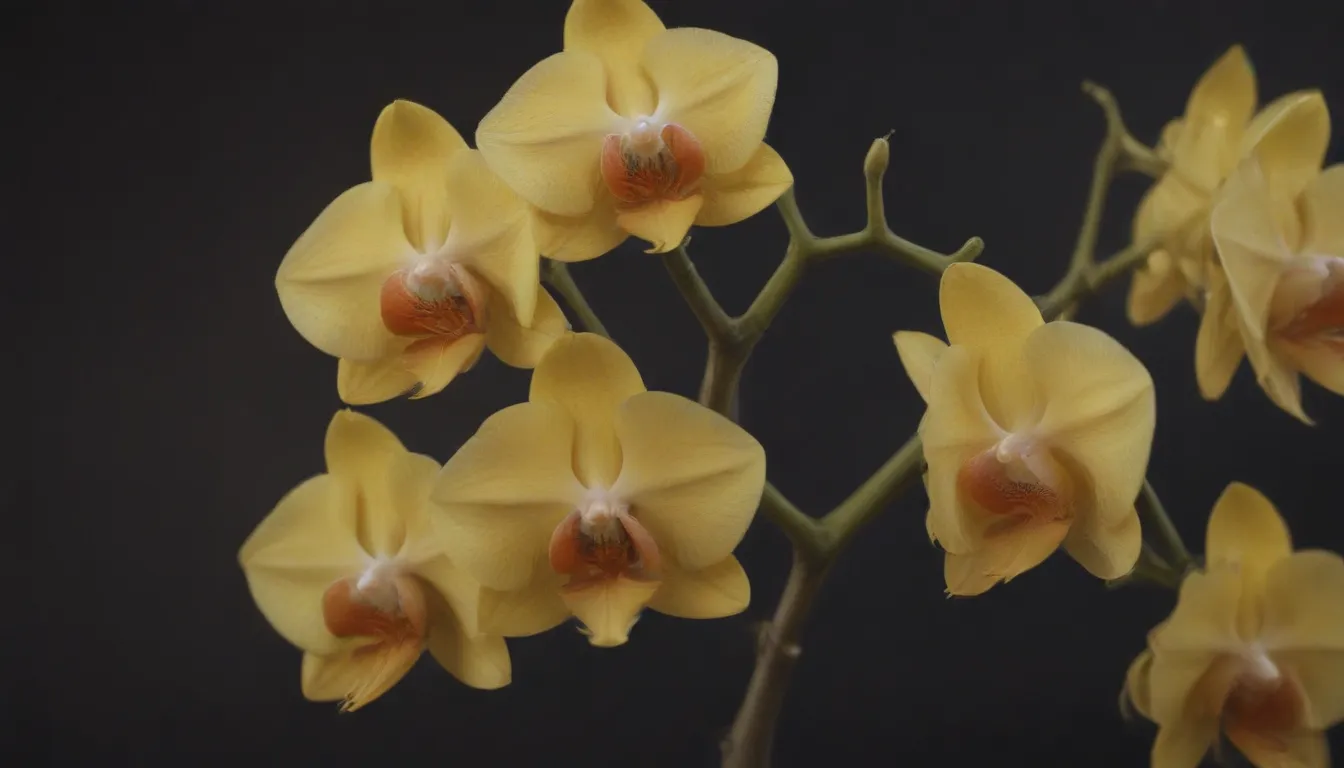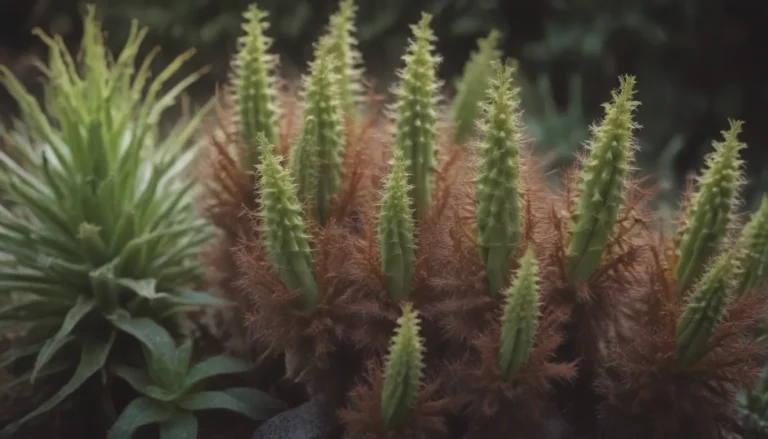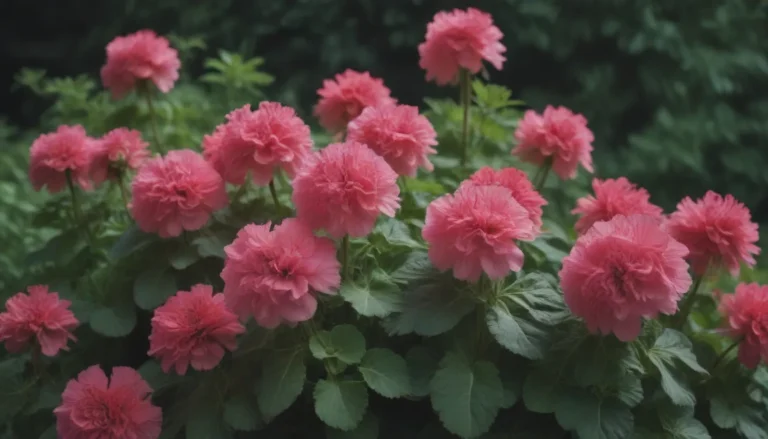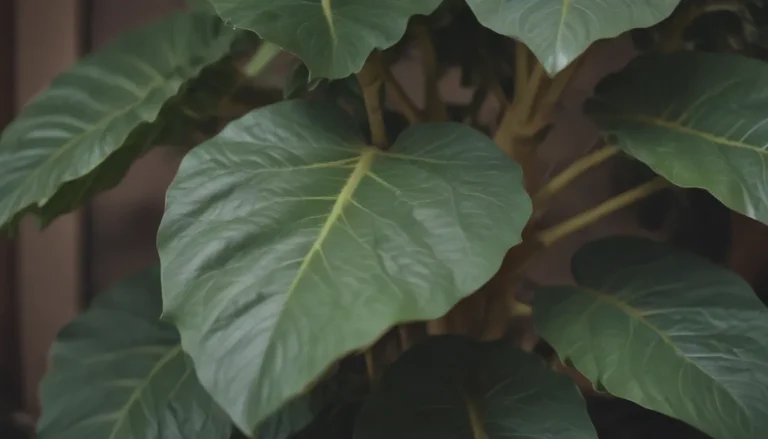Common Reasons Behind Yellow Orchid Stems: A Comprehensive Guide

Orchids are stunning plants that bring a touch of elegance to any space. Their delicate flowers and intricate foliage captivate plant enthusiasts around the world. However, when an orchid stem starts to turn yellow, it can be a cause for concern. Yellowing stems are often an indication that something is amiss with your orchid.
In this in-depth guide, we will explore the common reasons behind yellow orchid stems and provide valuable information on how to address these issues. From overwatering to nutrient deficiencies, there are several factors that can contribute to chlorosis in orchids. By understanding these causes and taking corrective measures, you can help your orchid regain its health and vibrancy.
Understanding the Orchid Stem
Before delving into the reasons behind yellowing orchid stems, it’s essential to understand the significance of the orchid stem. The orchid stem is the base of the plant where the leaves and flower spikes originate. While the spikes may sometimes be mistaken for the stem, it’s crucial to differentiate between the two. The main stem plays a vital role in supporting the growth of the entire orchid and facilitating photosynthesis.
Reasons Behind Yellow Orchid Stems
1. Overwatering
Overwatering is a common culprit behind many orchid problems, including yellowing stems. It’s crucial to maintain a balance when watering your orchid to prevent root saturation. When roots become waterlogged, excess moisture can travel up to the stem, causing chlorosis. Signs of overwatering include limp foliage and mushy roots.
How to Address Overwatering:
– Remove the orchid from its pot and inspect the roots.
– Trim any white, mushy roots.
– Repot the orchid with fresh, dry potting material.
– Allow the plant to dry out before resuming regular watering.
2. Too Much Sun
While orchids thrive in varying degrees of sunlight, direct exposure to the sun can lead to yellowing stems. Direct sunlight can reduce the chlorophyll content in the plant and cause moisture loss. It’s essential to provide your orchid with indirect light to prevent sun damage.
How to Address Sun Damage:
– Water the orchid thoroughly and allow excess water to drain.
– Move the plant to a cooler location with indirect light.
– Withhold fertilizer until the stem regains its green color.
3. Nutrient Deficiency
Orchids grown in pots with soilless mediums may experience nutrient deficiencies. Potting mixes provide minimal nutrition, making supplemental feeding crucial for orchid health. Calcium and nitrogen deficiencies are common issues that can manifest as yellow or dark spots on leaves.
How to Address Nutrient Deficiencies:
– Repot the orchid with fresh planting medium.
– Start fertilizing with a diluted orchid-specific fertilizer.
– Use filtered, distilled, or tap water that has been sitting to reduce chemical exposure.
4. Fungal and Bacterial Infections
Infections from bacteria and fungi can cause chlorosis in orchids, making prevention essential. Once the main stem starts to turn yellow, the infection has likely progressed. Immediate isolation of the plant and careful inspection of roots and leaves are necessary to address the infection.
How to Address Infections:
– Isolate the infected plant.
– Inspect roots and remove any black or mushy roots.
– Treat cuts with hydrogen peroxide.
– Allow the plant to recover, but discard severely damaged orchids.
Final Thoughts
While a yellow orchid stem may initially seem alarming, it’s essential to address the underlying cause promptly to prevent further damage. By understanding the common reasons behind yellowing orchid stems and taking corrective measures, you can help your orchid thrive. Remember to observe your orchid closely, provide adequate care, and seek professional advice if needed. With proper attention and care, your orchid can overcome chlorosis and regain its healthy green color.
In conclusion, maintaining a healthy orchid requires diligence and care. By identifying and addressing the causes of yellowing stems, you can ensure the continued beauty and vitality of your orchid. Stay attentive to your orchid’s needs, provide optimal growing conditions, and enjoy the beauty of these exquisite plants in your home.
Remember, a little extra care goes a long way in nurturing your orchid and preserving its natural beauty. Happy orchid growing!





